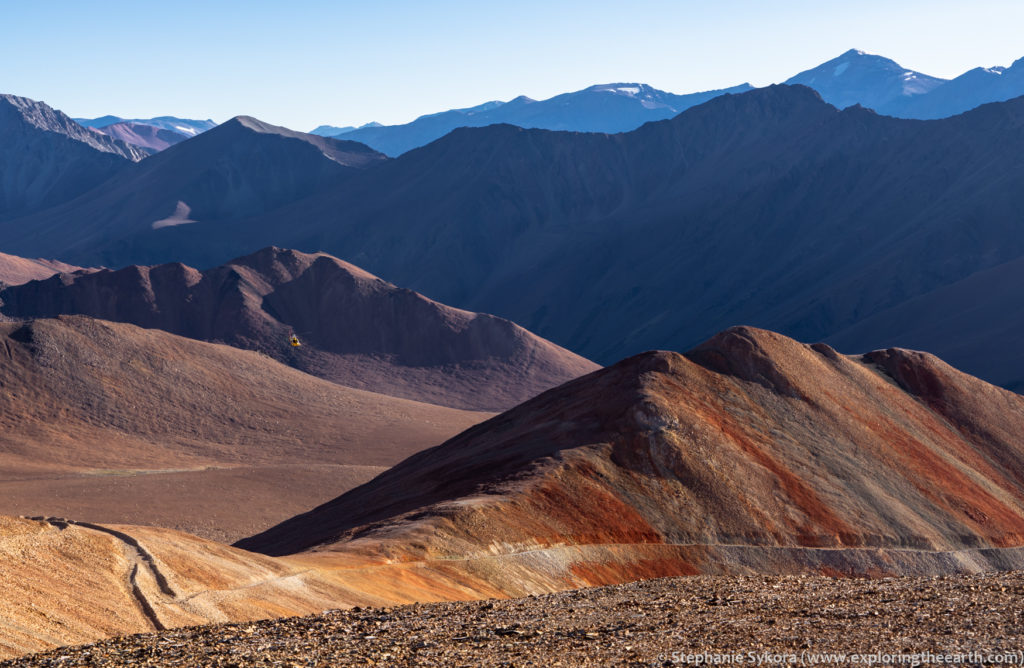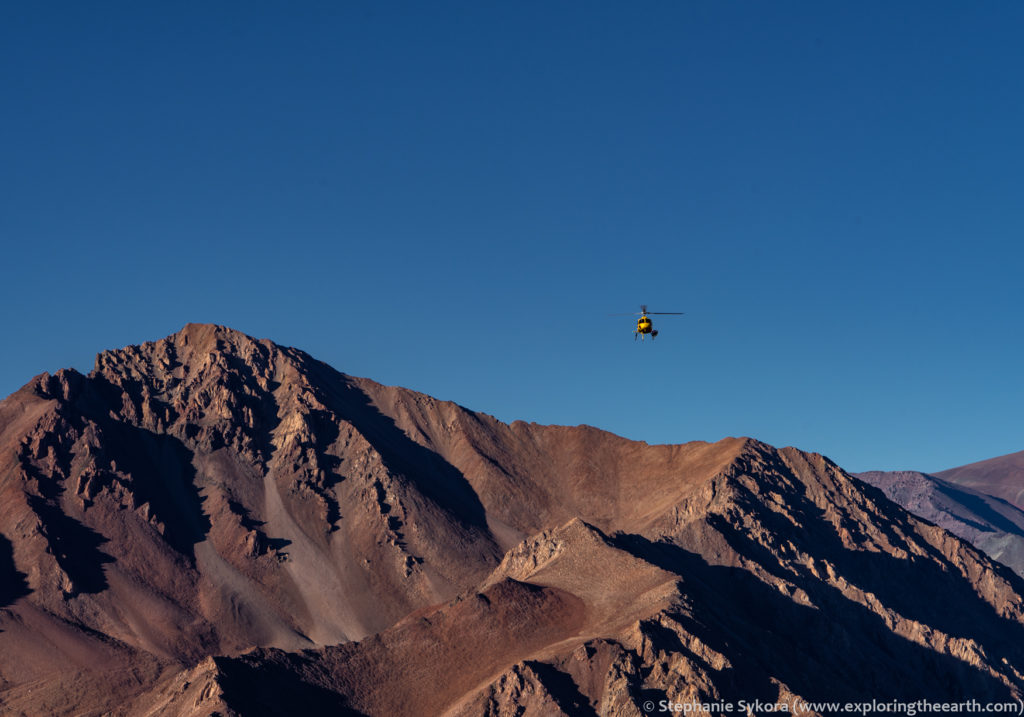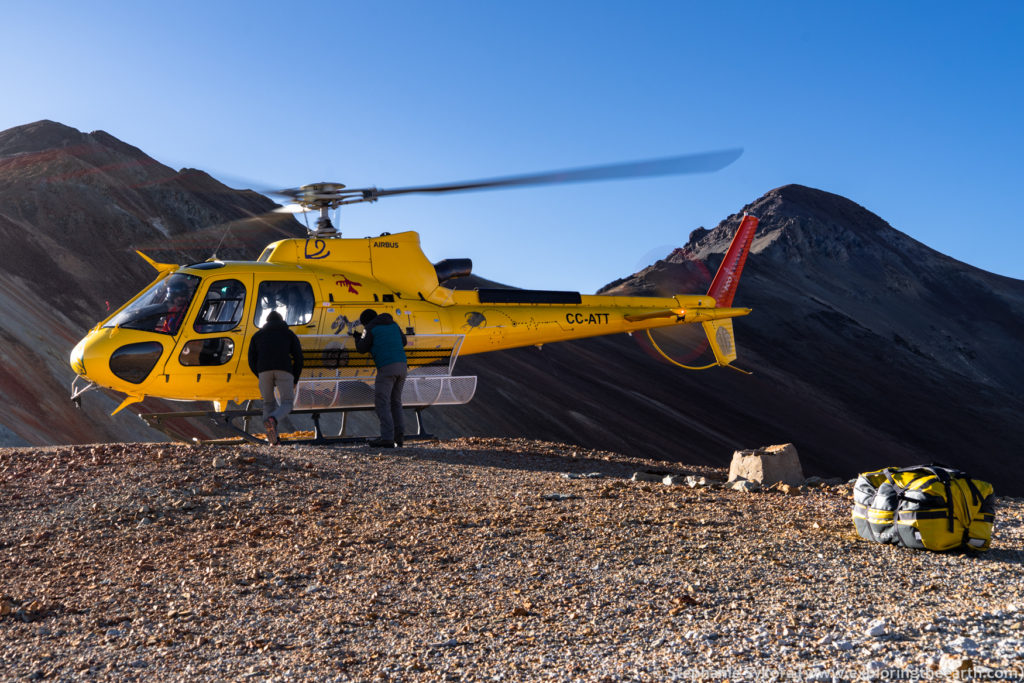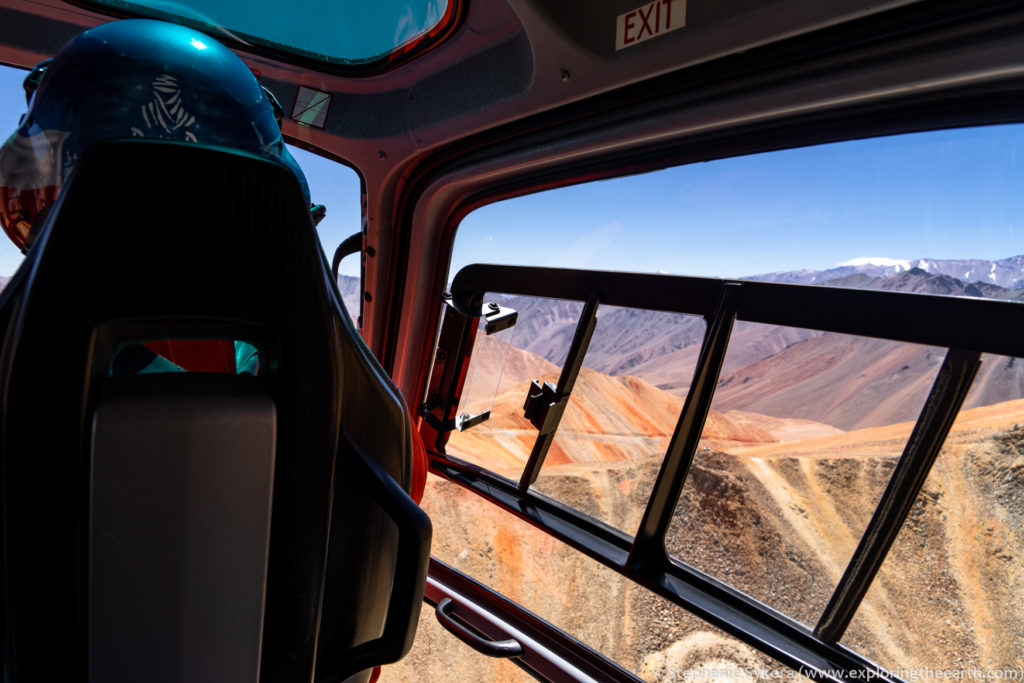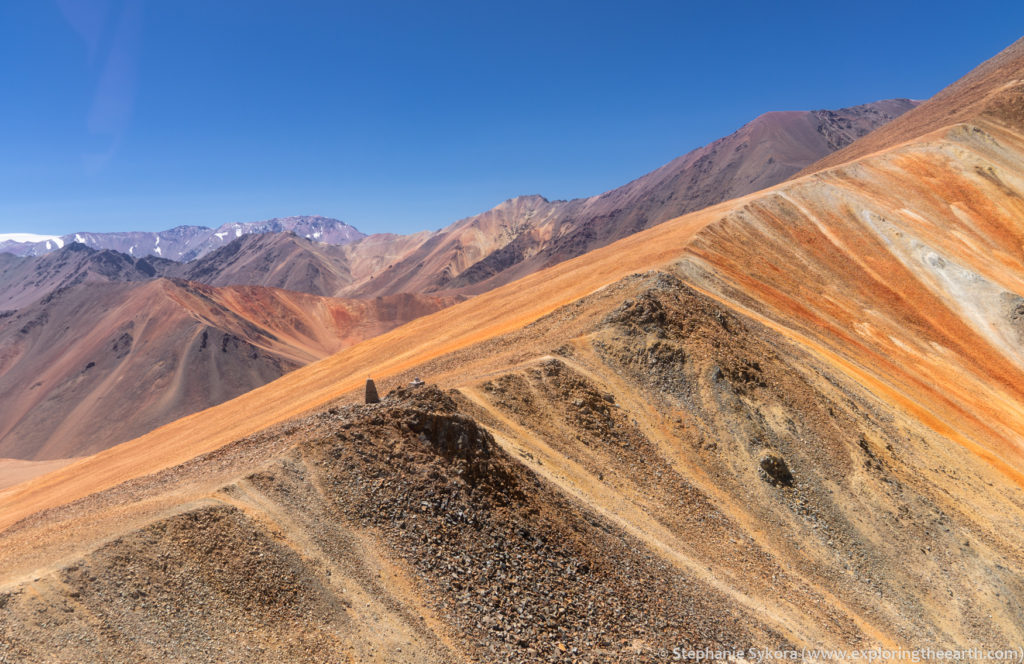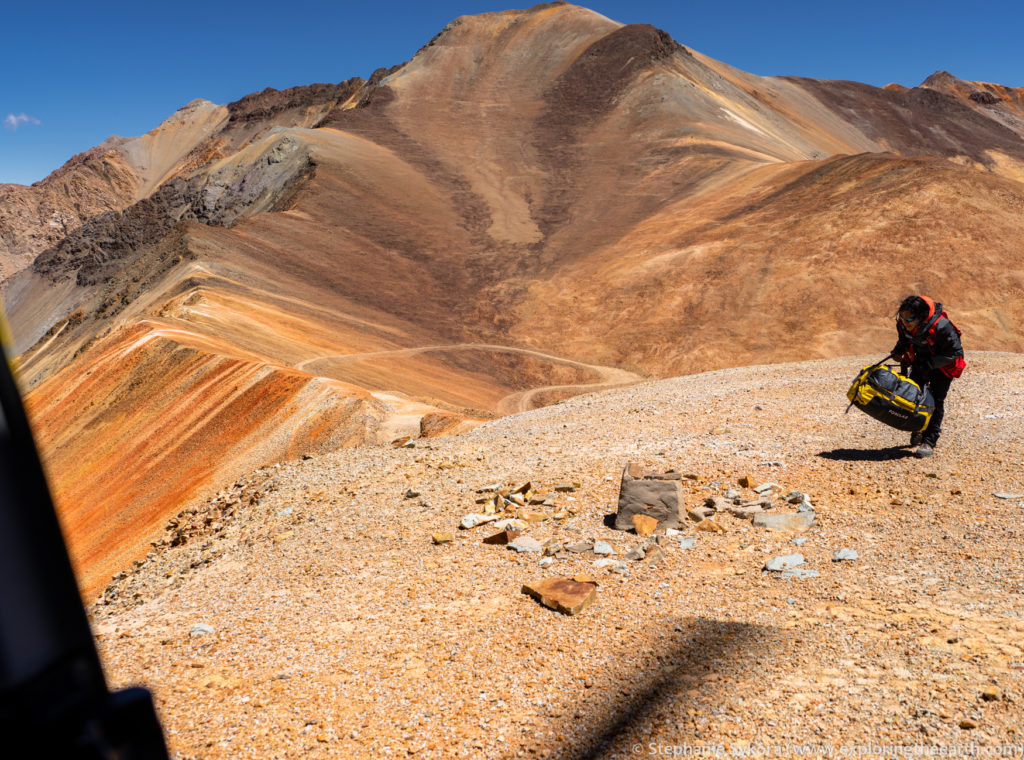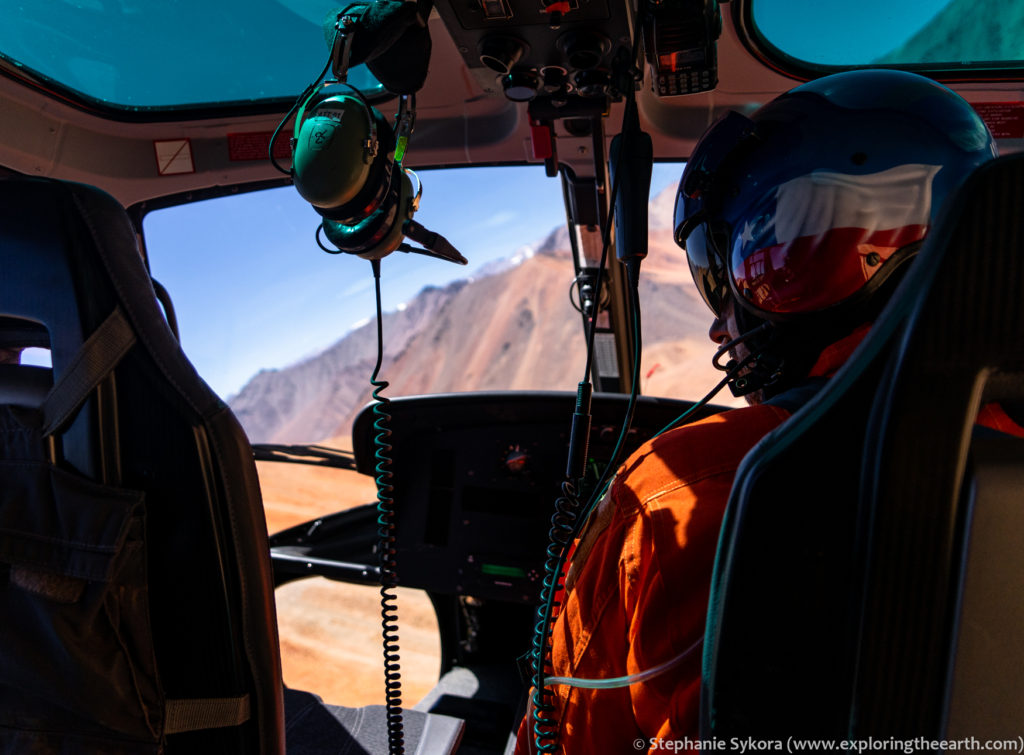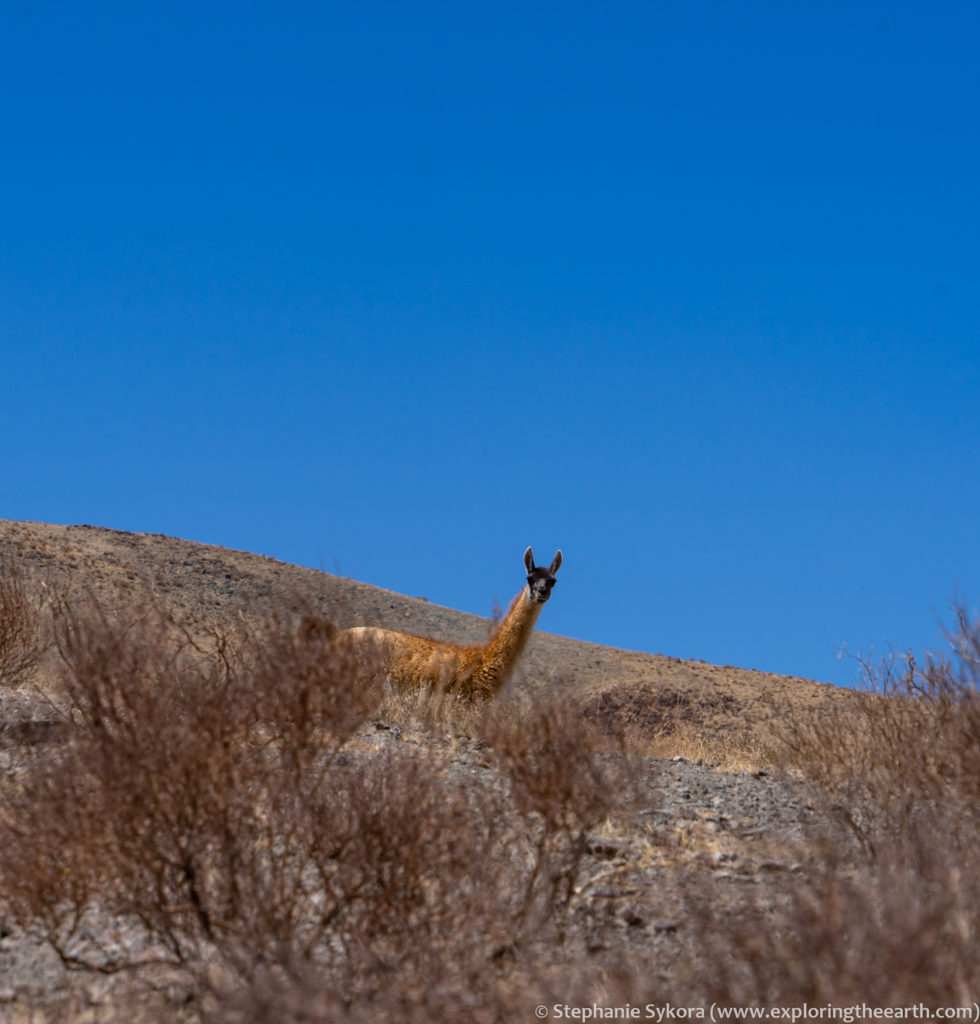Stephanie is an exploration geologists working globally for copper exploration. She write her own blog www.exploringtheearth.com on geology of various places she has worked in or been to.
As an exploration geologist, I am part of a small team that looks for mineral deposits containing significant amounts of copper. The South American country of Chile is host to some of the largest known copper deposits in the world (e.g., Chuquicamata, Rio Blanco-Los Bronces, etc.). These are a form of copper deposits called porphyry deposits (due to their associated with porphyritic-textured intrusive rocks). Copper, sulfur, and other metals and elements precipitate from aqueous high-temperature fluids (i.e., liquid, vapour or supercritical fluid), that are typically magmatic-hydrothermal in origin. This means that the fluids were originally dissolved in magma and exsolved on its decompression and/or crystallization. The result is large quantities of metals associated with veins, breccias, and disseminated styles of mineralization, but also associated with this fluid exsolution is significant hydrothermal alteration of minerals and rocks in the surrounding areas. This hydrothermal alteration can result in prominent colour anomalies in the surrounding rocks – which is important and I will get back to this later!
So, porphyry Cu deposits are associated with magmatism and active subduction in continental and oceanic arcs, which is what brings us to the Andes (the longest mountain chain in the world) of South America and the skinny country Chile. The continuous eastward subduction of the Pacific ocean plate underneath South America for hundreds of millions of years has led to compressive forces, creating volcanoes, folding and thrusting, and porphyries. However, throughout the Andes history, there have been transient periods of accelerated convergence rates of subduction, different angles of convergence, and areas of flat-slab subduction (likely due to the subduction of off-shore seamounts and other buoyant features). The areas of flat-slab subduction and absence of volcanism are typically where the majority of the copper deposits in Chile formed and/or are located.
Due to the dry climate of the Atacama desert (i.e., the driest place on earth), there isn’t much vegetation in the majority of these copper-bearing “belts” of Chile. Which is good in that there are lots of outcropping rocks to see, but also bad in that if there was an exposed or slightly exposure copper porphyry deposit then someone would have seen and found it by now… or so goes the popular belief. But by looking for the more volumetrically extensive but less diagnostic feature likes hydrothermal rock alteration, and particularly if this is located at hard-to-get-to places, there is a higher chance that something new can be found. And so enters our helicopter in the high Andes campaign.
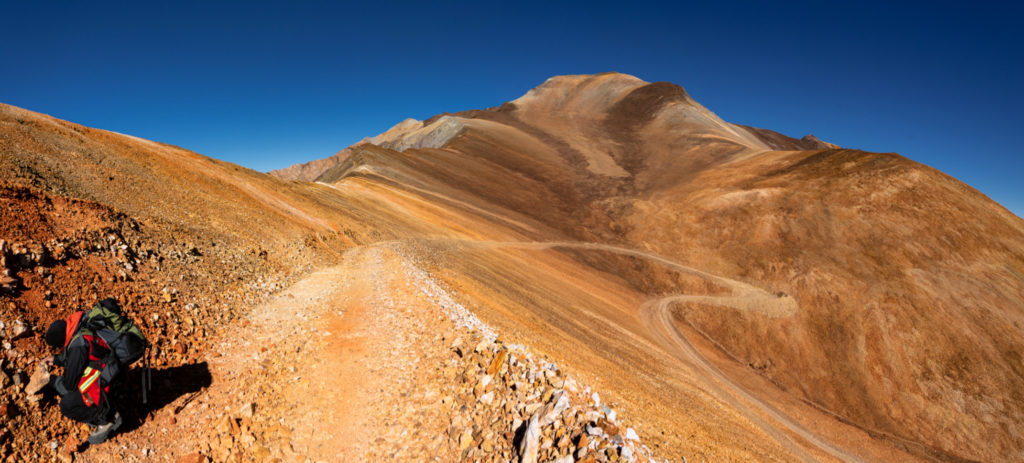
I’ve been in, and work around, helicopters many times before, such as in Alaska (USA) and British Columbia (Canada), but this particular helicopter campaign was my first time in a helicopter in the high Andes and things are a bit different here. The elevations in the Andes are high… very high, around 4000 to 5000 m. The air up there is thin, so hard to get much lift for helicopters. This becomes more of a concern in the afternoon when the air heats up and becomes less dense (i.e., harder to get lift), and the winds pick up. Thus our work consisted of leaving very early in the mornings (when it was light) and then typically needing to leave the field and come back in the early afternoons.
Another factor that is important in the Andes with helicopter work is weight. It is hard to land and take off as high altitudes with many people in the chopper, and thus it has to also remain on. So we needed to make splits each day and always have “hot” landings and take-offs (i.e., helicopter was still running). One team of two people would get dropped off below in a dried-up river bed quebrada, while the other team would be dropped off first. A survival kit was also necessary, which would be dropped in a particular location with sleeping bags, tents, and emergency food and water in case the chopper couldn’t come to get us at the end of the day. Luckily we never needed to use it during this campaign!
After getting dropped off in the Andes by the helicopter, the rest of the day typically consists of checking out the most interesting parts of the colour anomalies, making observations and taking rock samples. We use various data-set to help us identify what are the best locations, such as multispectral and hyperspectral imagery which can identify different clay and white mica minerals based on short-wave infrared light. Working at high elevations is also just a challenge in general for walking … doesn’t matter how fit you are, you breath heavy and walk slowly up in the high mountains as you feel every step. There is a saying from some of the guys of “walk like an old man, arrive like a young one”.
In conclusion, getting to the hard-to-get-to places is one of the main challenges in exploration geology. Being able to use a helicopter allows these inaccessible or hard to get to place much easier. Though of course, it has its price, which as you can imagine is an expense when dealing with helicopters. It is extremely helpful though, as instead of spending several days to get to an area of interest it takes less than an hour. Of course, there are safety concerns with flying at such high altitudes, but the helicopter pilots and company were very experienced in the area.
If you want to find an elephant, go to elephant country. While I don’t think this is turning entirely for copper porphyry deposits (there are lots of fertile and under-explored belts in the world), there is no denying the best, most metal-endowment geological belts for porphyry copper deposits is in Chile. Exploring for them is challenging and rewarding, and in this case, it sometimes requires you to get up in the air…
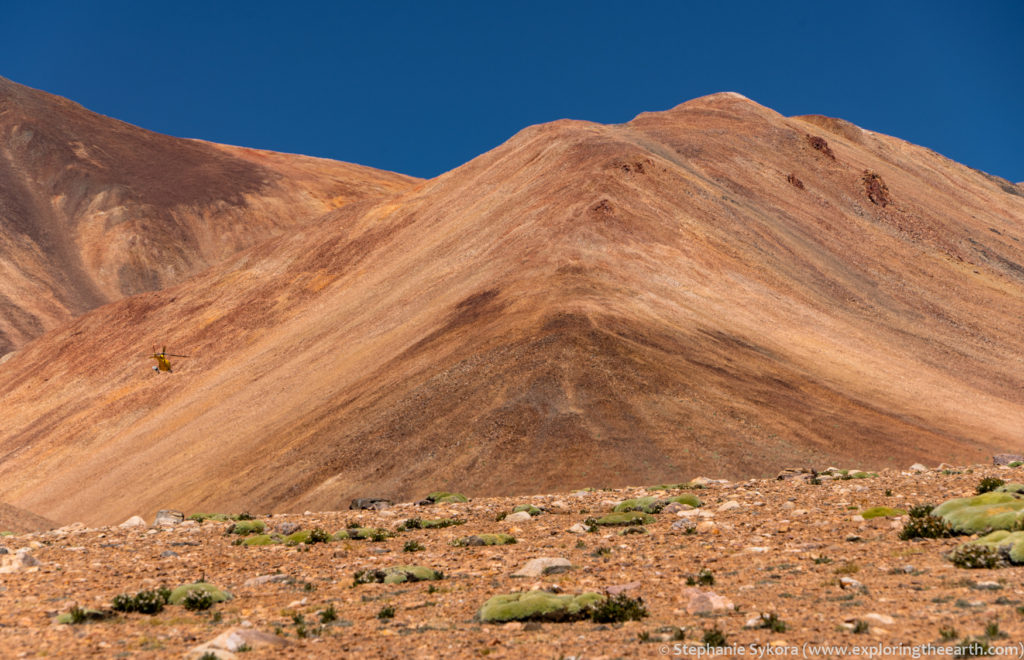
![]() This work is licensed under a Creative Commons Attribution-NonCommercial-ShareAlike 4.0 International License.
This work is licensed under a Creative Commons Attribution-NonCommercial-ShareAlike 4.0 International License.

